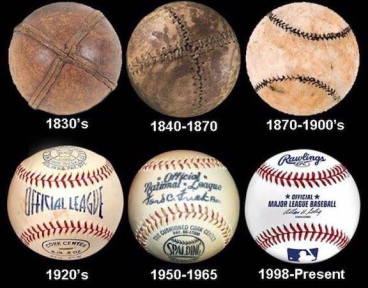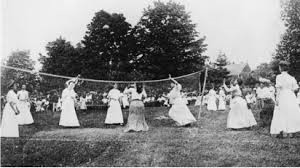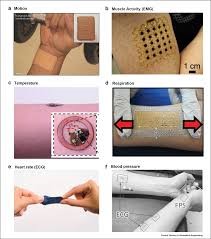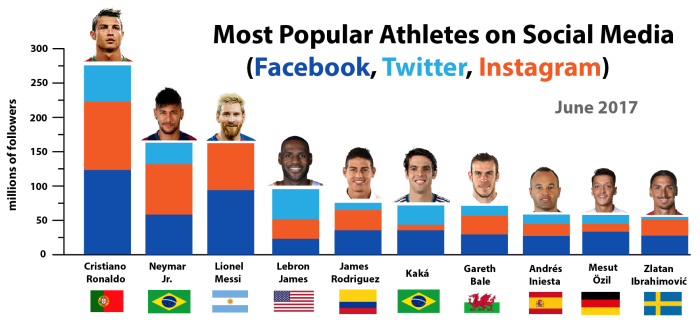Hello, Sports Fans!
A digital artifact is created through media platforms in order to persuade, inform or bring issues to light. Artifacts include podcasts, video series, audio or animation. In my communication course, Future Cultures, I have been asked to create a digital artifact and relate it to the future. I have chosen my digital artifact to be a series of videos, 3 in specific, on the future of sports. There will be a short term (1-2 years), medium term (5-10 years) and a long term (25-50 years) videos. These videos will inform you on different technologies being developed, various features that will enhance the sport experiences, how sports effects the society and fan culture.
History and Evolution
Sports had to start somewhere. In our case, it started in Ancient Greece with the first Olympic Games. These games included chariot racing, wrestling and javelin throwing. The games were in honor of the god Zeus. It would be held in Olympia, in a sanctuary named after Mt. Olympus.
I am going to go over the evolution of just a few of the most popular sports.

The game of baseball was invented by Alexander Cartwright in 1837. The roots of this sport are from a game in Britain. Originally the baseball was made out of horse hide and later changed in 1976 to cowhide that covers wool yarn. There was also a count on how many balls were used during a game, five to seven used in one game in the 1900-1920. Now the average is 8-10 dozen balls in one game. The bat has also gone through some changes. Starting off as a flat stick then changed to round in 1893. When the National League started there were no weight, height or circumference requirements. Now a standard wooden bat is made up of ash, maple or birch, a width of 2.61 inches and 33-34 inches in length. In 1912 the outfield was shorten in order to get more home runs to excited players and fans, from 488 feet to 420 feet. One of the most recent advancements in baseball is the use of technology. In 2002 video replays were an option, to track the pitch speed and to challenge umpire calls. As a result umpires are more accurate in their calls (Blast).

Soccer, aka football, is a world known game. The English, Football Association, are credited for creating the rules, unable to trip people and unable to touch the ball with your hands. In 1891 the penalty kick was introduced. In the 1970 World Cup, red and yellow cards were introduced. (Athnet) Because of the overwhelming popularity of American Football, association football was nick named soccer and it just stuck (Cunningham).

A version of volleyball started in 1895 called Mintonette. This was played with two teams on opposing side of a net with unlimited amount of people and touches before it goes over the net. In 1896 the some more rules were enforced and the game was changed to volleyball, as you volley the ball over the net . The Philippines introduced the terms ‘set’ and ‘spiker’ in 1916. The rules were then changed to each team has only three touches to get it over the net, in 1920. Volleyball grew very popular, as in 1951 over 50 million people were playing in over 60 countries. (Jindani)
Sport Analytics
Sport analytics is the “collection of relevant, historical, statistics that when properly applied can provide a competitive advantage to a team or individual.” (Wiki). This method has been around for decades but in the recent year it has skyrocketed with the invention of technology. For example the testing of skin interfaced wearable systems that will be able to monitor an athletes physiology, bio mechanics and movements. Conventional wearable devices such as wristbands, chest straps and athletic clothing are seen as too bulky and do not accurately represent the true data of the athlete. This new skin interfaced wearable system will offer “real-time understanding of sports performance and
recovery” (Ray). The key is to replace “traditional electronic materials with those that are intrinsically
stretchable, using either organic or inorganic chemistries, or by utilizing engineered composites that
combine ultra-thin, typically nanoscale wires, membranes, ribbons or platelets of established, high-performance materials (e.g. silicon, metals) with soft
substrates/superstrates, yields systems that can bend,
stretch, and flex” (Ray).

These devices are great for tracking an athletes performance and rehabilitation. There are still some work to be done as the idea of power management and human body sweat are complex issues. Skin interfaced wearable devices are still beneficial as they analyze the body’s physiological and bio mechanical habits, thus enlightening us on how our body works.
Athletes and Social Media

As we just finished talking about the body of the athlete, we can now move on to the athletes followers. Social media is here to stay and has many aspects toward an athlete
It has changed the status, performance and the person of an athlete. It takes a different kind of mental strength to deal with social media abuse and as an athlete it can effect the way you perform. The question is if athletes should have social media or not. The answer is that social media needs to be managed, “it is as ingrained in our society as sugar and alcohol. More so recently because it is now seen as an essential tool of success in many walks of business. Sport being a major one” (Towey).
It is hard to ignore social media as it is involved in almost every aspect of our lives. One of the good things about social media is the opportunity to promote yourself or your brand. Many athletes take this chance to increase their brand and sponsors.
Athletes also use social media to connect with their fans. They can post about their personal lives to be more relatable to fans. Fans, on the other hand, have the opportunity to follow any athlete they want. They can get the inside scoop into their lives.
Athletes have become a role model through social media. There is a debate of whether they should be or not, but the fact is that teenagers are looking up to athletes and allowing them to influence their decisions.
2020 Olympic Games

Sports is really a testing ground for new inventions and technology to be tested. The Olympics are a great showcase for these new advancements. The upcoming Olympic Games are going to be in Tokyo Japan. It is said to be the most “innovative and technologically advanced sporting event ever held” (Ryall). Japan plans to have a village of robots helping international visitors with transportation or direction. Multiple devices, such necklaces, watches, phones, are being used to be instant translators. The plan for autonomous cars are already on its way. Toyota and Nissan are already working on these driverless cars. Broadcasting will be done from drones flying high above the stadium and in 8K resolution working on 5G internet. Japan is planning to ‘Go Green’ with algae fueled airlines. This will take out 70% of the carbon dioxide emissions. Speaking of gases, Japan hopes to have hydrogen based city. The opening ceremony is going to reach passed the skies as Japan plans to create their own meteor shower (Futurism).
These spectacular advances are not only for sport events. Instant translators can be used throughout daily life. By this time next year we could have the power to understand what someone is saying in a different language instantaneously. Robots and people living harmoniously. By next year instead of waiter taking your order, a robot will come to the table to serve you. Lets just hope they don’t get a mind of their own. Same with driverless cars! No more drunk drivers. Cars will swiftly pick people up and drop people off. The testing of these devices will be held at the games and by next year we will see if they are up to par. If they work imagine what could happen within 10 years.
Next year seems so far away, but a wise person once said the future is now.
Amanda Bustos